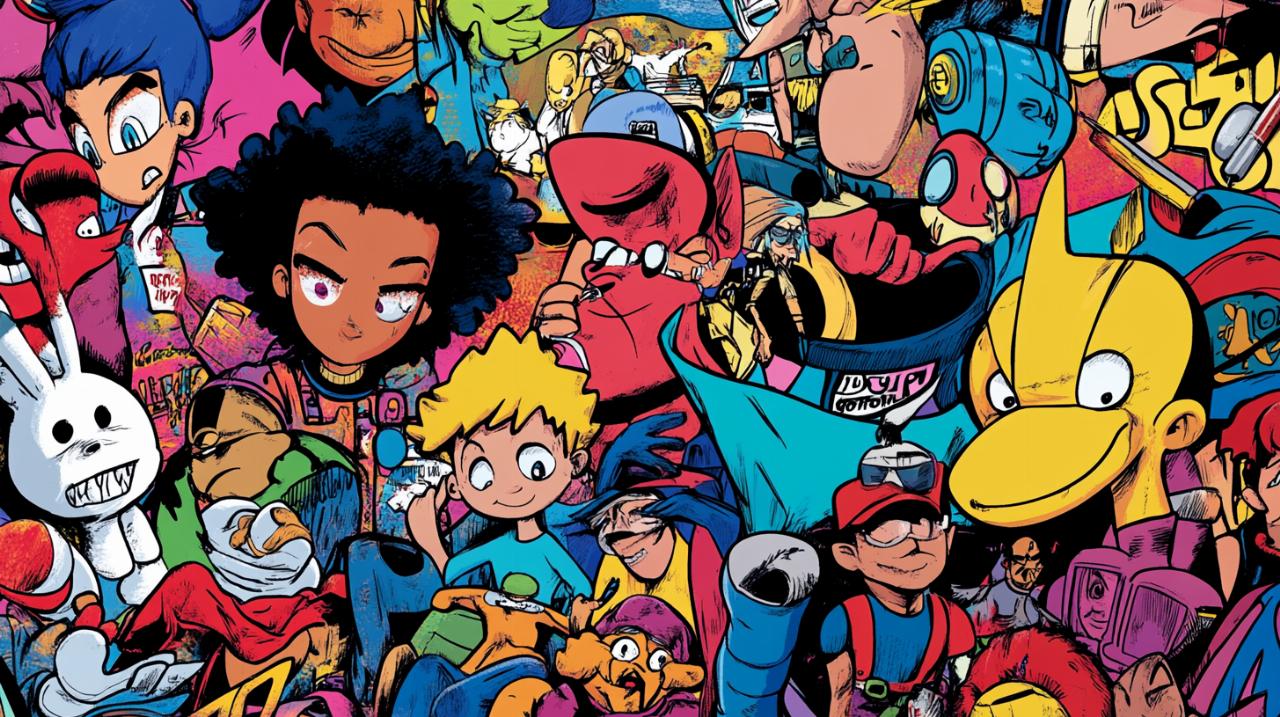For those of us who spent our formative years glued to the television screen with a bowl of cereal in hand, the 1990s represent a veritable treasure trove of animated brilliance. This era gifted us with a remarkable array of characters whose adventures, mishaps, and triumphs have remained etched in our collective memory. The decade was not merely about entertainment; it was a cultural phenomenon that shaped childhood experiences and continues to resonate with audiences today through streaming platforms and fond recollections.
The golden era of saturday morning television
Why the 90s revolutionised children's animation
The transformation that unfolded across children's programming during the 1990s was nothing short of revolutionary. Television channels recognised the immense potential within animated television shows and consequently invested substantial resources into developing original content with richer narratives and more complex character development. This commitment to quality was bolstered by technological advances that fundamentally changed how animation was produced. Digital animation tools enabled creators to craft more detailed worlds and bring characters to life with a level of sophistication previously unattainable. The shift from traditional hand-drawn methods to computer-assisted techniques allowed for smoother movement, more vibrant colours, and intricate backgrounds that transported viewers to fantastical realms.
Furthermore, studios and networks began to truly understand what resonated with younger audiences. They recognised that children craved stories with substance, characters they could relate to, and humour that spoke to their experiences. This deeper understanding led to programming that was not only entertaining but also meaningful. Channels such as Nickelodeon and Cartoon Network emerged as the premier destinations for this new wave of content, establishing themselves as cultural touchstones for an entire generation. The golden age of 1990s cartoons was characterised by diversity in genre, from action-packed adventures to comedies brimming with wit, ensuring there was something for everyone tuning in on those cherished Saturday mornings.
The Cultural Impact of 90s Cartoons on British Youth
The influence of these animated series extended far beyond mere entertainment, leaving an indelible mark on the cultural landscape of British youth. Characters from these shows became proper cultural icons, with figures such as Bart Simpson, Batman, Goku, and Pikachu transcending their respective programmes to become symbols recognised worldwide. The nostalgic 90s cartoon characters tribute we see today reflects how deeply these personalities embedded themselves into the fabric of childhood. They appeared on lunchboxes, backpacks, and bedroom posters, becoming constant companions in the daily lives of young viewers.
Many of these cartoons also imparted valuable moral lessons, with programmes like Doug teaching children about honesty, kindness, and navigating the complexities of growing up. The storytelling often tackled issues such as friendship, resilience, and the importance of standing up for what is right. This blend of entertainment and education ensured that the impact of these shows was both immediate and enduring. The sheer variety of characters and storylines meant that every child could find someone they identified with, whether it was the mischievous antics of Angelica Pickles or the stoic heroism of Batman. These narratives fostered a sense of community among viewers, who gathered to discuss episodes and share their favourite moments.
Legendary characters that defined a generation

American imports that captured british hearts
Whilst the United States was the birthplace of many of these beloved series, their appeal was truly global, and British audiences embraced them wholeheartedly. The arrival of U.S. telly programmes brought with them a diverse array of characters that quickly became household names. Homer Simpson, the bumbling yet endearing patriarch from Springfield, became synonymous with animated comedy, whilst SpongeBob SquarePants, though debuting towards the end of the decade, became a mega popular figure whose influence continues unabated. Action cartoons such as X-Men and Dragon Ball captivated viewers with their epic battles and intricate storylines, offering a blend of excitement and drama that kept audiences on the edge of their seats.
The darker and more mature tone of Batman: The Animated Series demonstrated that animation could appeal to older children and even adults, setting a new standard for storytelling within the medium. Meanwhile, anime began to gain significant traction in the West, with characters like Goku from Dragon Ball GT introducing British youth to the rich traditions of Japanese animation. These imports were not simply adopted; they were celebrated and integrated into the broader tapestry of kids' entertainment, influencing fashion, playground games, and even language. The catchphrases and iconic moments from these shows became part of everyday conversation, cementing their place in television history.
Homegrown heroes and their lasting legacy
Alongside the wave of American content, British animation also flourished during this period, producing homegrown heroes that resonated deeply with local audiences. These characters reflected the sensibilities and humour of the United Kingdom, offering narratives that felt familiar and authentic. The legacy of these homegrown creations is evident in the continued affection they inspire, with many adults today introducing their own children to the same programmes they adored decades ago. This intergenerational viewing experience has become a cherished ritual, allowing parents to share not only the fun but also the valuable lessons these cartoons imparted.
The advent of streaming services and the re-release of classic series have ensured that these timeless characters remain accessible to new audiences. The nostalgic appeal is undeniable, as adults who grew up during this golden age experience a profound sense of longing and warmth when revisiting these animated series. The cultural impact of 90s cartoons is not confined to memory alone; it continues to shape contemporary animation and influence modern storytelling. The emphasis on character development, moral lessons, and diverse representation pioneered during this era has become a cornerstone of children's programming today. The enduring popularity of these characters underscores their significance, proving that great storytelling and memorable personalities transcend time and continue to captivate hearts across generations.




